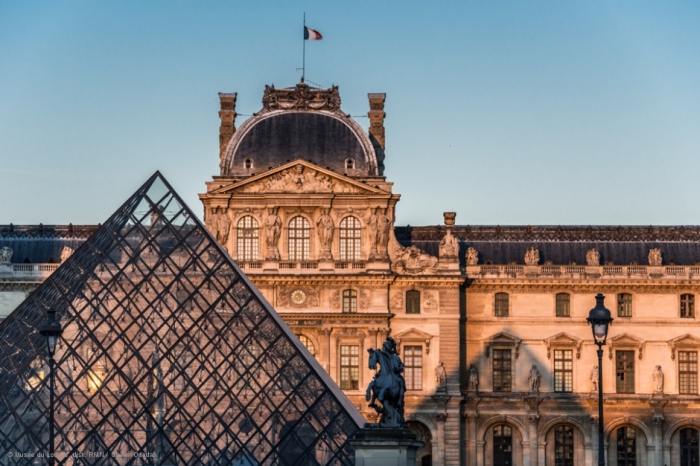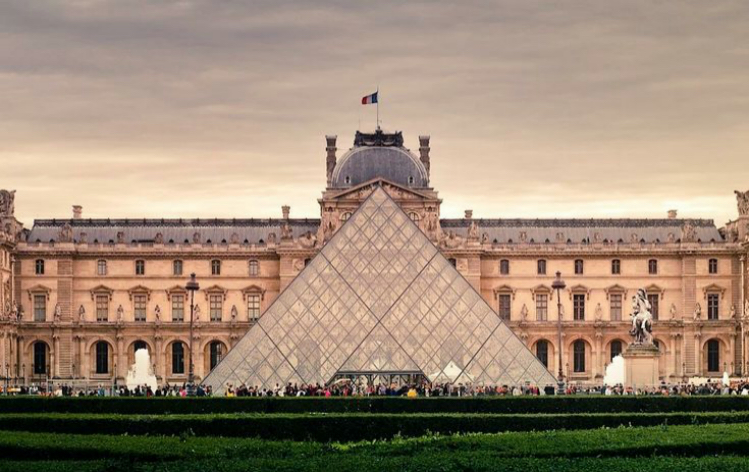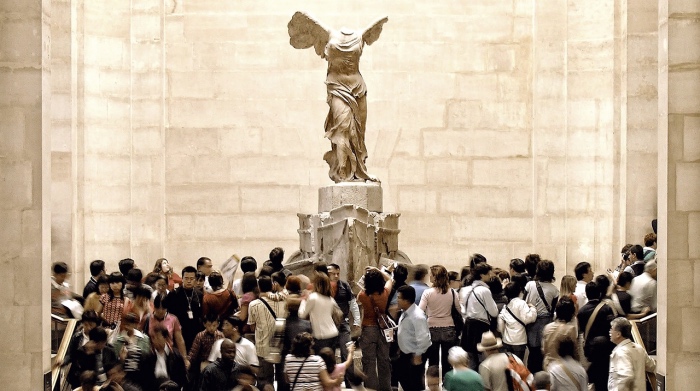Louvre Museum: works, tickets, history and everything you should know

Index
Tickets
History of the museum
Works
LOUVRE MUSEUM: WORKS, TICKETS, HISTORY AND EVERYTHING YOU SHOULD KNOW
Which work of art does come into your mind when you hear people mentioning the Louvre Museum?
I’m sure that it is easy to make a connection between Leonardo’s Mona Lisa and the Louvre Museum.
However, immediately after this work, the Winged Victory of Samothrace, Psyche revived by Cupid’s kiss by Canova, the Venus de Milo and many other masterpieces will come into your mind.
The Louvre Museum is certainly one of those museums that can’t disappoint anyone, because it houses many masterpieces and I believe that it should be put on the list of museums you should see at least once in your lifetime.
Organizing a visit to the Louvre Museum, however, might not be so easy. You need to arrange a tour in order not to miss the huge quantity of works to see and someone, in fact, prefers to plan a guided tour to be sure of not exiting the Louvre without seeing the fundamental works of art on display.
That’s why I decided to gather in this post all information about the Louvre Museum, to give you all useful tips if you’re going to plan a visit.
In this post you’ll find all information about booking your entrance ticket, the history of the first public museum in the world, the works you must see, and if you can’t find what you are looking for, ask me a question in the comments (at the end of the post) and I’ll answer 🙂
Louvre Museum

LOUVRE MUSEUM: TICKETS
You can’t see the Louvre Museum in only one day, because it’s huge.
In fact, those who visit the museum for the first time, have the feeling that they should come back sooner or later, to see that area of the museum they went through quickly.
Therefore, you need to plan your first or second visit by starting off on the right foot and by booking your entrance ticket.
Booking your ticket allows you to skip the line and not to waste precious minutes you can dedicate to admire the works of art on display.
There are different possibilities to visit the Louvre Museum.
You can choose to buy your admission ticket directly at the Louvre, or you can choose a guided tour.
To consider all options available, you’d better read the post containing the links which allow you to book immediately your entrance ticket. –> Louvre tickets: how to buy your ticket to skip the line
LOUVRE MUSEUM: HISTORY OF THE MUSEUM
The Louvre Museum is the most important museum in Europe and the most visited in the world.
The building became a museum only in the 18th century, because it was formerly a medieval fortress and later the royal residence of the Kings of France, until the court was moved to the new Palace of Versailles.
The transformation of the Louvre into a museum dates back to 1793, when it was created the Muséum Central des Arts, renamed in 1803 the Musée Napoléon.
Since then it has housed an overview of the masterpieces and works created from the Neolithic up to the present day.
The Louvre collection is divided into seven departments and each one exhibits works and archaeological artifacts of the greatest civilizations: from Egyptians to the Sumerians, from Greek and Roman antiquities up to Western art.
LOUVRE MUSEUM: WORKS
When I entered the Louvre Museum for the first time I believed that I could never see everything and that’s exactly what happened.
It’s not humanly possible to see everything, and especially to maintain your enthusiasm and focus your attention all day long. Frankly, towards the end of the day I felt very tired.
So, making a list of the unmissable works is essential, in order not to miss what is really important.
LOUVRE MUSEUM: IN-DEPTH ANALYSIS OF THE WORKS
- The Mona Lisa – is probably the most famous work housed at the Louvre Museum.
It’s Leonardo da Vinci’s most famous painting and also the most mysterious one, because both the identity of the woman portrayed and the client are unknown. Many books have been written about the Mona Lisa, but in front of her enigmatic smile everyone remains speechless and admires her beauty. - The Winged Victory of Samothrace– with its impressive size the Winged Victory catapults visitors into history of the ancient world.
Discovered in 1863 on the island of Samothrace, the Winged Victory announces the victory in battle and the perfection of details will leave you astonished. - The Venus de Milo- Discovered in 1820 in a field on the Greek island of Milos, it was attributed to Greek sculptor Alexandros of Antioch. It’s a masterpiece of classical art!
- The Raft of the Medusa- it’s one masterpiece painted by Théodore Géricault, symbol of the struggle of the weakest against privileges.
That event aroused French opinion of that time.
It portrays the tragedy of a ship, heading towards Senegal, which ran aground on a sandbank off the West African coast, near today’s Mauritania. - Psyche revived by Cupid’s kiss– this is certainly the most beautiful sculpture group of the 19th century. Antonio Canova represents god Cupid and Psyche locked in a passionate embrace.

The Winged Victory of Samothrace
Follow me on:
About me
In this blog, I don't explain the history of art — I tell the stories that art itself tells.


